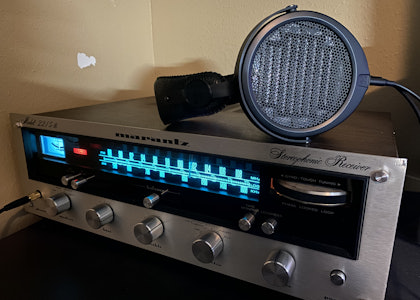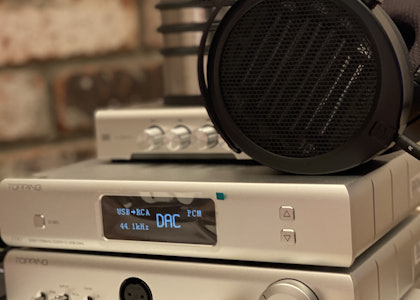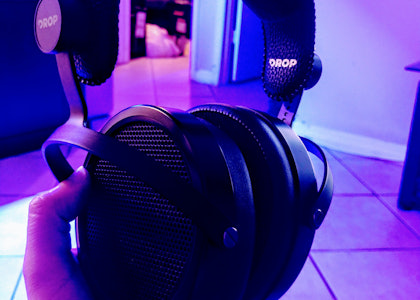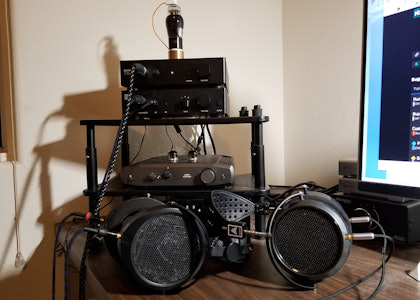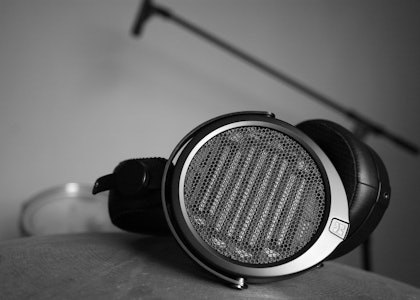Click to view our Accessibility Statement or contact us with accessibility-related questions$229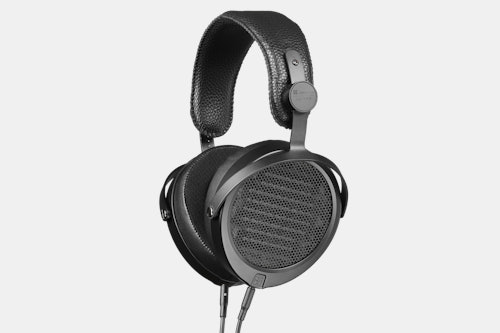
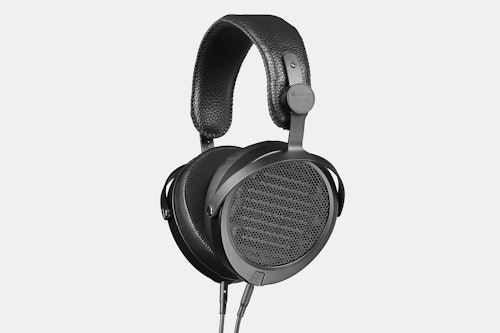
$229See all 341 reviewsSee all 39 questions
LifelongCaboose gave you $10 to spend on your first purchase on Drop! Sign Up to learn more.
Free Standard Shipping in the US on orders over $99
Free Standard Shipping in the US on orders over $99
Drop + HIFIMAN HE5XX Planar Magnetic Headphones
$199


01 / 11
Drop + HIFIMAN HE5XX Planar Magnetic Headphones
bookmark_border
$199
check_box_outline_blank
Add Drop 3-year Warranty with Accidental Coverage (US Only) +$35.00
4.2k Sold
·
Ready to Ship
·
Free Returns in USA
●
Members who purchase earn
597
Drop Rewards
Frequently bought together:
add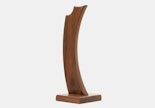

Barrett Creative Lamina V2 Stand - Drop Exclusive
Share:
Review Highlights:
expand_less
star_borderstar
star_borderstar
star_borderstar
star_borderstar
star_borderstar
Great Planar sound at an Unbelievable Price
Review of Hifiman 5XX
Since these are so new, I wanted to get out as soon as possible impressions of the new Drop + Hifman 5XX. It is the latest joint project between Drop (formerly Massdrop) and Hifiman who produce (mostly) magnetic planar headphones across all price ranges from $125 to $6000 (even much higher for the TOTL Shangri La and Shangri La Jr. electrostatic phones and special amps known as energizers). I bought these myself the first day they hit the drop so I got no remuneration for this review.
It’s also important to know the gear used in a review. I listened to the HE5XX through a SMSL 300MKII Dac, a McIntosh MHA 100 amp, and used Hart Audio cables (though I’m not a cable makes a phone sound different kind of guy.)
First lets confront the naming controversy. Is this a reissue of the renowned HE500? I used to own the HE500 and it was a wonderful headphone that could be improved greatly by making DIY mods to the original phones. Personally, I don’t see any relationship between the HE5XX and the 500. I think it’s best to treat them as 2 different headphones. If you want a pair of HE500’s they often come up used. Occasionally, Hifiman has a few pair of them lying around they will sell open box to you (you have to call the store to get information on these and the HE6 they may have.)
Some people also say it’s a redesigned Deva. I don’t own the Deva so I can’t answer that. If it’s true then Deva owners have a great sounding phone, because the HE5XX sound better than any sub $300 planar headphone should.
Being a new product, the passage of time benefits the HE5XX. Much like the reworked HE4XX (2020), the 5XX benefit from changes in the implementation of magnet structure and a much thinner diaphragm that have trickled down from the Susvara and HEK series. These allow the newer drivers to catch much better nuance in recordings.
The HE5XX have some great things they bring to the table. You get the lower distortion of the planar design which like electostats can give you an uncanny “you are there” esperience. Further, the 5XX have a great sense of dynamics that remind me of the dynamics in the Focal Elex or Clear. The HE5XX are tuned mostly neutral with a smidge of extra bass. This tuning is one that Hifiman uses on a lot of their phones even their most expensive. There is good separation, instrument location and a decent stereo image.
Where the more expensive Hifiman phones and the Focal Clears exceed the 5XX is in detail retrieval. The 5XX aren’t the detail monsters that the HE1000SE and Susvara (or even the Arya) are. But since these other phones run from $1599 to $6000 MSRP it’s not a fair comparison. What you get in the 5XX is a solid musical image which is coherent and keeps, nay demands your attention.
Frequency Response:
Bass: The bass is present and there and is proportional to the song you’re listening to. A listen to “Better Things” by Massive Attack has bass and excellent female vocals, even if these aren’t phones that give you the extra heavy bass EDM, and Triphop users crave. (Usually to achieve the preferred sound for listening to these types of music the bass is boosted either through headphone choice of EQ.)
That’s not to say the bass is lacking. A listen to Patricia Barber’s cover of the iconic Doors song “Light My Fire” has excellent bass and the natural sound of the acoustic bass and the warm alto of Ms. Barber’s voice come through clearly. It’s like being in a smoky jazz club, and there is no shortage of the required bass to bring this warm performance to life.
Midrange: Midrange sounds distinctive and there is no bleedthrough from the bass. The Grateful Dead’s “Uncle John’s Band” is a great test of vocals and the 5XX display it wonderfully.
Treble: Treble is fully present mostly without sibilance. There are a couple of “torture tracks” I play to see how the top end sounds. One is Thomas Dolby’s “Hyperactive”. There is lots of treble in this song which is excellently recorded and the 5XX come through sibilance and sharpness free.
The second track is the Yes song, “Roundabout”. (It’s important you listen to the right version of this song. The remix from 2008 has too much top energy to the detriment of other parts of the song.) Listening to the much superior 2003 Remix of Yes’ album Fragile shows a full frequency response where the top end holds its own with only a very small amount of top end sharpness.
Final thoughts:
The HE5XX are surprisingly addictive to wear with a great overall tuning that makes you want to continue to listen to them. They are very musical sounding headphones. As I listen to them while writing this they are giving me much aural pleasure. Talking Heads “Psychokiller” and the Stone’s “Sympathy for the Devil” sound wonderful on the 5XX.
The 5XX are priced well for what you get. Personally, I prefer this phone to the Drop+Sennheiser 6XX, although the 6XX is a very competent reference level phone, it’s just not as lively as the 5XX.
If you are a basshead I have to recommend the Drop/Meze Classic Noir, which are exceptional in an unapologetically bassy and warm sound signature. I think the Meze Classic is a great phone to pair with the more neutral 5XX.
Overall, I think the HE5XX is a great buy, especially if you judge it only on what it brings to the table. It’s not an HE500, but it is exceptional in its own way.
check
Would recommend to a friend.
star_borderstar
star_borderstar
star_borderstar
star_borderstar
star_borderstar
5/5 stars for value. 4/5 stars for sound. Great alternative to the HD58X or HD6XX dynamics
Holy f**k $220? I'm so glad Drop is back to its old self where the deal is so fricking good that I have to give them my money. TBH, I thought this was going to be priced at $399 - "as a deal" - the old HE-500s were what? $699.
The OG HE-500 was known in Head-Fi circles as having a speaker-like presentation. Voluminous but not overdone bass, a dip in the upper mids (the opposite of the Sennheiser HD800), with a return in the mid-treble. The HE5XX isn't exactly the same, but it carries out this tradition with a host of improvements. The headband takes after the OG look, but is in fact way more comfortable with better quality padding. The gimbal mechanism is more refined with wider bands of metal and a built in mechanism for swivel. The cups and clamping force feel much much lighter. I wasn't a big fan of the Sundara's ergonomics, but it looks like Drop x HFM has taken many of those criticisms to heart and massively improved on them.
I think a lot of people are going to be happy that HFM has brought these back from the dead. There's been a segment of hobbyists have been itching to get that of that old school sound (HE-6, HE-5, HE-500) and HFM, while initially saying that bringing them back was out of the question, has been steadily releasing remasters of them in the past few years. Looks like Drop went all in with HFM on the HE5XX, and that's a good thing because all of sudden, its super affordable.
In terms of sound, let's compare to the OG HE-500. The HE5XX is very similar to it, but arguably better in terms of FR because it doesn't have the OG HE-500's dip in the upper mids. There's still a depression, but it's not so obvious. In terms of the highs, if we isolate them, seem a bit overall brighter on the 5XX, but not excessively so. However, it should be noted that OG HE-500 also had a peak - a tizzy point in the mid-treble.
The most immediate difference is that the HE5XX is clearer. The OG HE-500 always had a veil and congested bass, alleviated somewhat by a big power amp. This what I used to call "HFM bass", which was always there with the HE500 which could not be fully be powered through like with HE-5 and HE-6.
In terms of transient response, the HE5XX sound faster and lighter on its feet. As a result, there is some loss of heft in the lows that the OG HE-500 was well known for. The HEXX isn't as hefty and powerful in the lows as the Audezes, but in return it's not as sluggish. We're talking about tradeoffs. The use of a low gain speaker power amp can give us back some of that heft if you are so inclined.
I will provide FR measurements for now:
Drop x HiFiMan HE5XX (bone stock)
Frequency Response
miniDSP EARS (SBAF perceptive neutral compensation)
NOTE: additional comments on timbre, headband, impedance, and FR comparisons below in self-reply.
MORE DISCUSSION HERE: https://www.superbestaudiofriends.org/index.php?threads/drop-hifiman-he5xx-review-and-measurements.10082
NOVEMBER 5, 2020 UPDATE:
An even more bass extended and smoother frequency response can be obtained that looks like this. The materials needed can be found in your kitchen drawer. For details here: https://www.superbestaudiofriends.org/index.php?threads/drop-hifiman-he5xx-review-and-measurements.10082/page-8#post-324536
Drop x HiFiMan HE5XX (Tape mod)
Frequency Response
miniDSP EARS (SBAF perceptive neutral compensation)
check
Would recommend to a friend.
Q&A Highlights:
expand_less
What is a planar magnetic headphone? What are the benefits of this type of headphone?
A planar magnetic driver (PMD) uses a very thin membrane with a conductor bonded to it. There are magnets on one or both sides of this membrane and current is passed through the conductor in alternating directions, creating an electromagnetic field that interacts with the stationary magnets to create movement of the membrane. This is instead of a cone and coil arrangement people are typically familiar with in a dynamic driver. The primary advantage is substantially lower moving mass and thus better frequency response throughout the audible range. This results in a headphone that is typically better balanced and sounds flatter than a dynamic driver. PMDs also typically sound clearer and are better at separating the sounds of multiple instruments than dynamic drivers. The drawback is that the range of motion of the driver in a PMD is typically less than that of a dynamic driver and the flat membrane itself is not as rigid as a cone shape result in a less impactful bass presence. PMDs are typically characterized by very tightly controlled and accurate bass, but if you are a bass head these are not for you. They also usually exhibit higher impedance than dynamic drivers in a similar class meaning you're more likely to need an amp (though many are perfectly happy running right at acceptable volumes off your phone).
A third, similar, driver type that is found in over ear headphones is the electrostatic driver (E-stats). These are similar in principle to the PMDs, however instead of a conductor bonded to the membrane, they are coated in an ultra thin conductive film, and instead of magnets on either side, a metal mesh is present on both sides. Each mesh screen is then energized in an alternating fashion with a very high voltage (relative to traditional drivers) creating an electrostatic field that moves the membrane. As a result of the required voltage, a special amp is required. These take the idea of planar magnetics a bit further because there is even less moving mass and give a very bright, analytical sound signature.
E-Stats are best for listening to classical, acoustic, Jazz, and similar, but are unsuited to heavier rock, electronic, rap, hip hop, etc. E-stats are also known for having an eerie "lifelikeness" to their sound that isn't seen with any other driver types and can be polarizing as a result. Dynamic drivers deliver the thumping bass usually desired for electronic rap, hip hop, and also sound great with rock. Finally, PMDs are very versatile and can sound great with most music, but shine best with rock, classical, jazz etc. Ultimately one is not objectively better than another becaus each does different things well, and it is up to you to decide which you like the most.
Do these need to be used with an AMP?
These headphones are capable of being driven to "acceptable" levels directly from most cell phones or laptops etc.. However if you're someone who typically desires more volume I'd recommend an amp with an output of 1.5 volts rms or greater output at 10 ohms impedance.
Sort by: Recommended
keyboard_arrow_downDrop Refurbished
Like-new products you can trustDrop Rewards
Get $5 for every 500 points you earn! Learn more
Drop Keyboard Club
Become a member and expand your keycap collection© 2024 Drop



